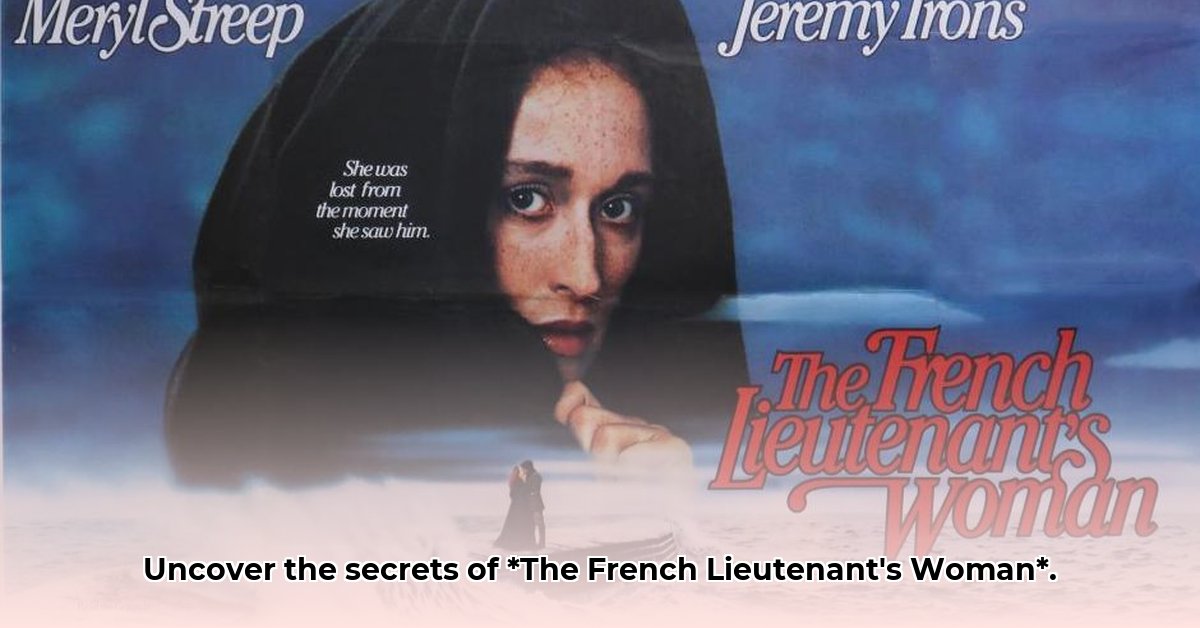
Bringing John Fowles's complex and metafictional novel, The French Lieutenant's Woman, to the big screen was no small feat. This isn't your average adaptation; it's a cinematic tightrope walk, balancing faithfulness to the source material with innovative filmmaking techniques. This article delves into the production secrets behind this landmark film, exploring the creative decisions, challenges overcome, and lasting legacy of Karel Reisz's masterpiece.
Pre-Production: Laying the Foundation for a Masterpiece
Long before cameras rolled, the filmmakers faced the daunting task of translating Fowles's intricate narrative and ambiguous ending onto the screen. The initial concept, no doubt, involved numerous debates about how to capture the novel's self-awareness and its playful manipulation of storytelling conventions. The script itself would have been a major challenge, needing to both streamline the sprawling narrative while simultaneously capturing the novel's essence. The casting of Meryl Streep and Jeremy Irons proved a masterstroke; their on-screen chemistry and individual gravitas were essential to the film's success. Consider, for a moment, the meticulous location scouting that must have taken place – finding picturesque Victorian settings authentic enough to transport viewers back in time. Did the team grapple with period accuracy versus modern convenience? What compromises had to be made?
Production: Navigating the Metafictional Maze
Filming The French Lieutenant's Woman presented a multitude of challenges. Recreating Victorian England, from the costumes to the sets, demanded painstaking attention to detail. But the real challenge went beyond period accuracy. How did the crew visually capture the novel's multi-layered narrative, its constant awareness of its own fictionality? This was no easy task, requiring creative solutions. We can only imagine the on-set discussions, the collaborative efforts to seamlessly weave together multiple narrative threads and portray the film's metafictional elements. How did they deal with the inherent limitations of the time? What technical hurdles did they encounter? And how did budgetary constraints impact these decisions? Did they ever consider simplifying the novel's complex structure?
Post-Production: Weaving Multiple Endings
The editing process was undoubtedly intricate. Integrating the authorial voice – the narrator’s direct address to the audience – into the visual narrative required deft skill. Each cut, each transition had to maintain the film’s delicate balance between historical drama and self-reflexive commentary. The multiple endings, an audacious cinematic choice, further complicated this process. How did the editor successfully weave these different outcomes together, creating a cohesive whole without sacrificing the film's thematic resonance? The post-production phase also included the critical task of marketing this intellectually challenging film to a broad audience. How did they attract a wider viewership without dumbing down the film's subtlety and sophistication?
Reception and Legacy: A Lasting Impression
Upon its release, The French Lieutenant's Woman received a mixed response. However, its enduring influence on cinematic adaptations of literary works is undeniable. The film is remembered for its skillful blend of historical drama, romantic intrigue, and metafictional playfulness. It demonstrated that a complex, self-aware novel could be successfully adapted into a visually engaging and intellectually stimulating film, and many critics cite the innovative ways the story's multiple timelines and perspectives were presented on screen as especially creative choices. Its legacy continues to inspire filmmakers today. Was the film's success a matter of sheer luck or a consequence of insightful planning and execution?
Key Production Insights: A Summary
The success of The French Lieutenant's Woman wasn't accidental. It was the meticulous planning, creative problem-solving, and the collaborative spirit of the entire production team. The film serves as a testament to the power of collaboration, the importance of bold creative choices, and the enduring appeal of blending traditional storytelling with innovative cinematic techniques. Its lasting impact proves that a dedicated and inspired team can transform a complex novel into an equally powerful cinematic experience.